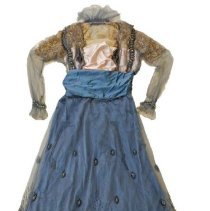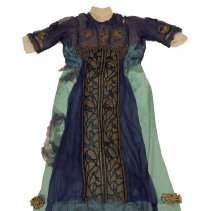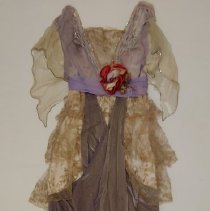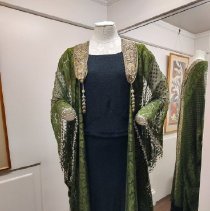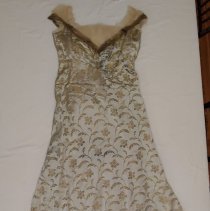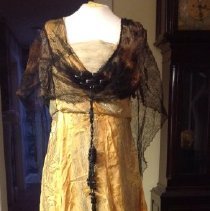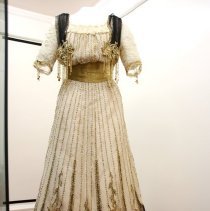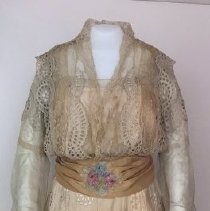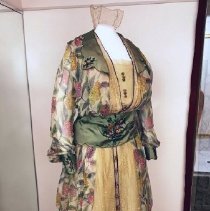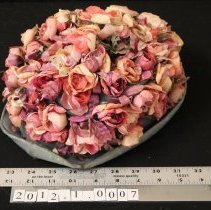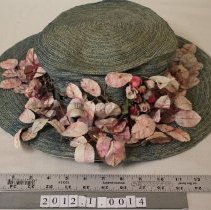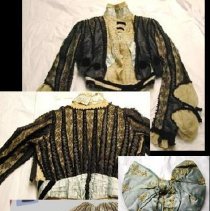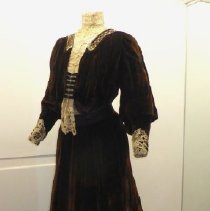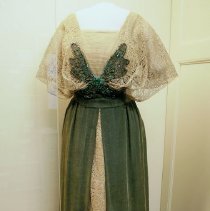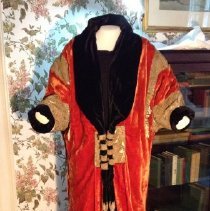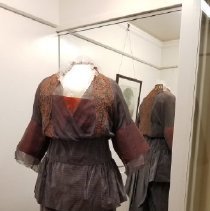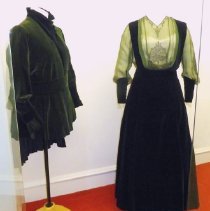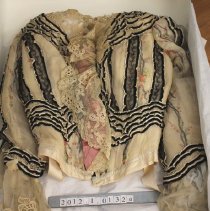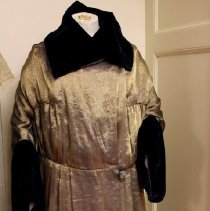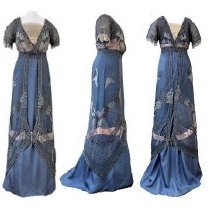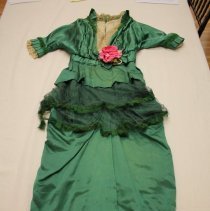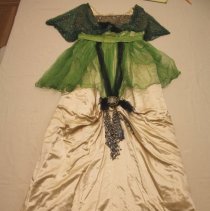Person Record
Images
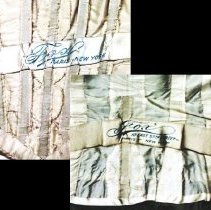
Metadata
Name |
Fox Company |
Places of residence |
Havemayer House 10 East 57th Street |
Notes |
FOX COMPANY The Fox Company, Bessie Van Wickle-McKee's favorite dressmaker, was one of the oldest and most elite dressmaking establishments in the United States. Founded by the four Fox sisters in 1885, it occupied an elegant house at 53 East 34th Street in New York City. Under the Fox sisters, the business flourished, ultimately employing 225 people. The sisters' marketing policy was relatively simple but clever - there was no sign on the door and they never advertised, thus giving the appearance of exclusivity. And their wealthy clients willingly recommended them to their friends. Their reputation as a fashion house imbued with an aristocratic flavor allowed them to confine their customer base to the fashionable set. By the early 1890s Bessie Van Wickle had become a patron of the Fox sisters' establishment. Bessie spent weeks at a time in New York City, staying at the Plaza Hotel with her husband Augustus who was conducting business in the city. Fox quickly became Bessie's favorite couturier, and most of her gowns were made by them. When she moved to Boston with her second husband William McKee in 1901 she commented that she would not be purchasing her gowns in that city-she would be staying with Fox. She made frequent buying trips to New York, spending the modern-day equivalent of thousands of dollars at a time. A January 1911 invoice includes one dress costing the equivalent of $10,600, with one day's shopping spree totaling $72,000 (in today's dollars)! By 1903 the Fox sisters were very wealthy, and ready to retire, so they sold the business to Mrs. Edward Douglas. Mrs. Douglas retained all the Fox customers by making no changes in the sales staff and keeping the elegant house exactly as the Fox sisters had. She also traveled regularly to Europe in search of new fashions, exquisite fabrics, and gorgeous trims. In the1910s, the tone of East 34th Street had begun to change from an upscale residential district to a more commercial one, so Mrs. Douglas moved her establishment to a more gracious neighborhood. She bought the Havemeyer house at 10 East 57th Street, on a very fashionable block between Madison and Fifth Avenue, and next door to Paul Durand-Ruel's art gallery. She filled the new establishment with beautiful furnishings from Europe, and maintained her reputation as the couturier of New York's most influential women. ---Margaret Whitehead, November 2014 The following is an excerpt from New York Times, "Dressmaker Now in Exclusive Block." Thursday, October 5, 1911, page 7 T.M. and J.M. Fox Co., one of the oldest dressmaking establishments in the U.S. purchased the Havemayer house at 10 East 57th Street for $220,000. Behind the sale of this house is a story about a woman with a clear mind and a willingness to work. The T.M. and J.M. Fox Company is Mrs. Edward Douglas, who took over the establishment of the Fox sisters. Mrs. Douglas had no prior experience in dressmaking and business. She took it over only 8 years ago. Although Mrs. Douglas is married, her husband has no interest in the business. She is the mother of four boys and two girls. Mrs. Douglas is a native of Dublin. Her previous husband in Ireland, Peter White, was a successful merchant of Irish products. At that time, Irish products were not popular in the U.S. (1880s). But in 1886, and later at the Chicago's World Fair, Irish goods, particularly laces, became popular. (There was an Irish Village at the World's Fair.) When they looked toward someone to supervise the Village at the World's Fair, the Irish government looked to Peter White. However he had died. So his widow went instead. Mrs. Douglas remained in Chicago for 10 years and eventually ran her own Irish Shop. In 1903 the Fox dressmaking business was offered to her. The Fox Dressmaking business had been founded by the four Fox sisters in 1885. Although they were now wealthy by the time Mrs. Douglas appeared, they were ready to retire. They had an old house on 53 East 34th Street and employed 225 people. There was no nameplate on the door and they never advertised. They did however confine their business to the fashionable set. They refused strangers at the door and even denied selling clothes to people of the theatre, etc. This policy was immensely successful and soon they were rich. When Mrs. Douglas took over the business, she was ignorant about dress design and the business almost collapsed during the first two years. However she managed to retain the old Fox customers by keeping the same sales people, and by keeping the house exactly the same as the Fox sisters did. Eventually, Mrs. Douglas added new customers. Soon the atmosphere on East 34th began to change from a residential neighborhood to a commercial one. Mrs. Douglas was afraid that the mystique would be threatened. She began to look for another home in a gracious neighborhood for her "business." Two years ago (1909) Mrs. Douglas began to plan to buy the Havemayer House. She also traveled to Europe to find exquisite furnishings for it. After the sale was closed, she had everything she needed for the new location. Now work goes on as in the past. People will pass the Havemayer House and never know that the gowns of the wealthy and privileged are made inside. |

